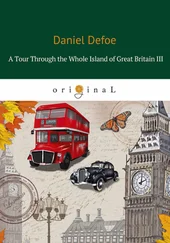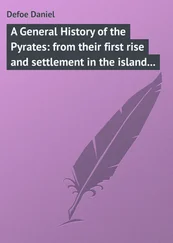Daniel Defoe - Tour through the Eastern Counties of England, 1722
Здесь есть возможность читать онлайн «Daniel Defoe - Tour through the Eastern Counties of England, 1722» — ознакомительный отрывок электронной книги совершенно бесплатно, а после прочтения отрывка купить полную версию. В некоторых случаях можно слушать аудио, скачать через торрент в формате fb2 и присутствует краткое содержание. Жанр: foreign_antique, foreign_prose, на английском языке. Описание произведения, (предисловие) а так же отзывы посетителей доступны на портале библиотеки ЛибКат.
- Название:Tour through the Eastern Counties of England, 1722
- Автор:
- Жанр:
- Год:неизвестен
- ISBN:нет данных
- Рейтинг книги:3 / 5. Голосов: 1
-
Избранное:Добавить в избранное
- Отзывы:
-
Ваша оценка:
- 60
- 1
- 2
- 3
- 4
- 5
Tour through the Eastern Counties of England, 1722: краткое содержание, описание и аннотация
Предлагаем к чтению аннотацию, описание, краткое содержание или предисловие (зависит от того, что написал сам автор книги «Tour through the Eastern Counties of England, 1722»). Если вы не нашли необходимую информацию о книге — напишите в комментариях, мы постараемся отыскать её.
Tour through the Eastern Counties of England, 1722 — читать онлайн ознакомительный отрывок
Ниже представлен текст книги, разбитый по страницам. Система сохранения места последней прочитанной страницы, позволяет с удобством читать онлайн бесплатно книгу «Tour through the Eastern Counties of England, 1722», без необходимости каждый раз заново искать на чём Вы остановились. Поставьте закладку, и сможете в любой момент перейти на страницу, на которой закончили чтение.
Интервал:
Закладка:
Daniel Defoe
Tour through the Eastern Counties of England, 1722
Defoe’s “particular and diverting account of whatever is curious and worth observation” in his native country, told in a series of letters, was founded upon seventeen separate tours in the counties, and three larger tours through the whole country. He said he had “viewed the north part of England and the south part of Scotland five several times over,” and he thought it worth while to note what he saw, because, “the fate of things gives a new face to things; produces changes in low life, and innumerable incidents; plants and supplants families; raises and sinks towns; removes manufactures and trade; great towns decay and small towns rise; new towns, new palaces, and new seats are built every day; great rivers and good harbours dry up, and grow useless; again, new ports are opened; brooks are made rivers; small rivers navigable pools, and harbours are made where there were none before, and the like.” We are endeavouring, by little books published from time to time in this “National Library,” to secure some record of the changes in our land and in our manners as a people, and of what was worth record in his day we can wish for no better reporter than Defoe.
Here, therefore, is Defoe’s first letter, which describes a Tour through the Eastern Counties as they were in 1722. It opens his first volume, published in 1724, which was entitled, “A Tour through the whole Island of Great Britain, Divided into Circuits or Journies. Giving a Particular and Diverting Account of whatever is Curious and worth Observation, viz., I. A Description of the Principal Cities and Towns, their Situation, Magnitude, Government, and Commerce. II. The Customs, Manners, Speech, as also the Exercises, Diversions, and Employment of the People. III. The Produce and Improvement of the Lands, the Trade and Manufactures. IV. The Sea Ports and Fortifications, the Course of Rivers, and the Inland Navigation. V. The Public Edifices, Seats and Palaces of the Nobility and Gentry. With Useful Observations upon the Whole. Particularly fitted for the Reading of such as Desire to Travel over the Island. By a Gentleman.” The Second Volume of the Tour was published in June, 1725; and the Third Volume, giving a Tour through Scotland with a Map of Scotland by Mr. Moll, followed in August, 1726, completing the record of what Defoe called “a tedious and very expensive five years’ Travel.” However tedious the travel may have been, Defoe’s account of it is anything but tedious reading.
The change of times is in this letter vividly illustrated in this volume by Defoe’s account of life as he found it in the undrained Essex marshes. Life in them was so unhealthy that the land was cheap, men thus were tempted to take fevers for grazing and corn-growing. They became fairly acclimatised, but when they brought their wives in fresh and healthy from the uplands the women sickened and perished so fast, that it was common to find a man with his sixth or eighth wife, and Defoe was told of an old farmer who was living with his twenty-fifth wife, and had a son about thirty-five years old, who had been married to about fourteen wives. Custom had even dulled the sense of this horrible state of things until the frequent change of wives became a local joke.
We have also a reminder in this volume of the traces and fresh memories of Civil War in the account of the Siege of Colchester, which is a bit of realisation such as no man could give better than Defoe. We may note also the fulness of detail in his account of Ipswich, a town that he first knew as a child of seven. He tells how it was once noted for strong collier vessels built there, he maintains its honour and explains its decay, while he makes various suggestions for the restoration of prosperity, even to the hint that Ipswich would be a healthy and pleasant place for persons to retire to who would live well upon slender means. He writes, indeed, of Ipswich like a loyal townsman who had lived there all his life.
At Bury St. Edmunds Defoe tolls us how in a pathway between two churches a barrister of good family attempted to assassinate his brother-in-law whom he had invited with his wife and children to supper. On excuse of visiting a neighbour he led him to the ambush of a hired assassin. They left their victim for dead, horribly mangled on the head and face and body with a hedgebill. He lived to bring them to justice, and was living still when Defoe wrote. But the assassins had been condemned to death “on the statute for defacing and dismembering, called the Coventry Act.” This Tour also recalls the days when Bury was a place of fashionable holiday resort. Defoe meditates upon the decline and fall of Dunwich, tells of the coming and going of the swallows from our east coast, and of innumerable swallows whom he saw one day waiting for a favourable wind on the roofs of the church and houses at Southwold. We read of the coming up to London of the Norfolk turkeys on foot, in droves of from three hundred to a thousand, and so many droves that by one route alone, and that not the most crowded – over Stratford Bridge – a hundred and forty thousand birds travelled to London between August and October.
In Norwich, Defoe was less interested than in Ipswich; but of Yarmouth his account is full, and the frequency of wrecks on the east coast, especially about Cromer Bay, which seamen called the Devil’s Throat, is illustrated by the fact that in all the way from Winterton towards Cromer that “the farmers and country people had scarce a barn, or a shed, or a stable, nay not the pales of their yards and gardens, not a hog sty, but what was built of old planks, beams, wales, and timbers, etc., the wrecks of ships, and ruins of mariners’ and merchants’ fortunes.”
Defoe saw the races at Newmarket, where he was “sick of the jockeying part.” He went also to Bury Fair, of which he gives a full description, and at Cambridge he paid honour to the University.
There was another Tour told in letters so near to Defoe’s in date and form that the first or second volume of one work is often sold with the second or first volume of the other. The book not by Defoe was entitled “A Journey through England in Familiar Letters from a Gentleman” here to his friend abroad, in two vols., 1722, with a third volume on Scotland in 1726. All editions published after Defoe’s death in 1731 have matter added by others. The addition of new matter began with the novelist Samuel Richardson in 1732.
Some time afterwards there were changes announced as “by a gentleman of eminence in the literary world.”
H. M.I began my travels where I purpose to end them, viz., at the City of London, and therefore my account of the city itself will come last, that is to say, at the latter end of my southern progress; and as in the course of this journey I shall have many occasions to call it a circuit, if not a circle, so I chose to give it the title of circuits in the plural, because I do not pretend to have travelled it all in one journey, but in many, and some of them many times over; the better to inform myself of everything I could find worth taking notice of.
I hope it will appear that I am not the less, but the more capable of giving a full account of things, by how much the more deliberation I have taken in the view of them, and by how much the oftener I have had opportunity to see them.
I set out the 3rd of April, 1722, going first eastward, and took what I think I may very honestly call a circuit in the very letter of it; for I went down by the coast of the Thames through the Marshes or Hundreds on the south side of the county of Essex, till I came to Malden, Colchester, and Harwich, thence continuing on the coast of Suffolk to Yarmouth; thence round by the edge of the sea, on the north and west side of Norfolk, to Lynn, Wisbech, and the Wash; thence back again, on the north side of Suffolk and Essex, to the west, ending it in Middlesex, near the place where I began it, reserving the middle or centre of the several counties to some little excursions, which I made by themselves.
Читать дальшеИнтервал:
Закладка:
Похожие книги на «Tour through the Eastern Counties of England, 1722»
Представляем Вашему вниманию похожие книги на «Tour through the Eastern Counties of England, 1722» списком для выбора. Мы отобрали схожую по названию и смыслу литературу в надежде предоставить читателям больше вариантов отыскать новые, интересные, ещё непрочитанные произведения.
Обсуждение, отзывы о книге «Tour through the Eastern Counties of England, 1722» и просто собственные мнения читателей. Оставьте ваши комментарии, напишите, что Вы думаете о произведении, его смысле или главных героях. Укажите что конкретно понравилось, а что нет, и почему Вы так считаете.












